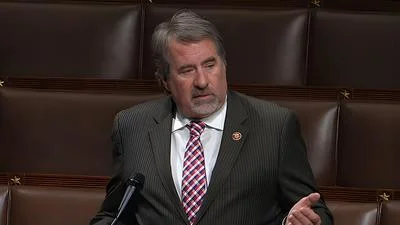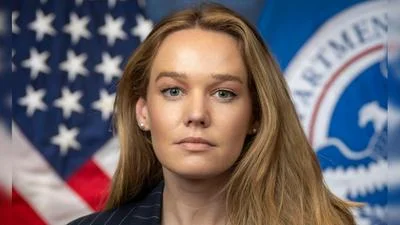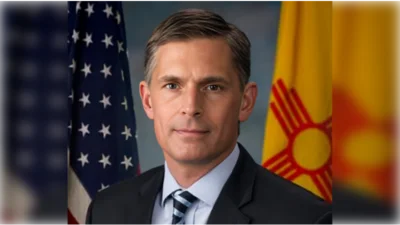The team of federal employees supporting the U.S. Department of Energy (DOE) Office of Indian Energy Policy and Programs is small but mighty. In this "Meet Our Team" blog series, we introduce key staff dedicated to the Office and its mission to support tribes in pursuing their energy visions.
David Conrad rejoined the team as Deputy Director of the Office of Indian Energy in 2021 after serving in the same role from 2015 to 2017. Read on to learn more about his path in public service, his breadth of experience supporting tribal communities, and his reasons for returning to his roots within DOE.
How have your life experiences shaped your path and prepared you to serve as Deputy Director of the Office of Indian Energy?
When I was exploring career paths and applying to college, I recognized I had a vocation for public service. Originally, I was interested in working for the State Department. I was focusing on international affairs and had a great experience on a student exchange in Eastern Europe.
This was before the fall of the Iron Curtain; the experience left a strong impression on me. I was really inspired by the people I met and their drive for self-determination. In graduate school I started studying environmental policy and administration, drawing upon my experience as a foreign exchange student and decided to look closer to home with regard to self-determination and environmental protection.
Being an Osage citizen, I was always cognizant of oil and gas development on the Osage Reservation. During graduate school, I attended a conference, where I heard a presentation from Mervyn Tano, the Environmental Program Director for the Council of Energy Resource Tribes (CERT). That presentation's combination of tribal sovereignty, energy development, and environmental protection impressed me, so I applied for a summer internship with CERT, and they invited me back for a year-long fellowship.
They had a cooperative agreement with DOE and placed me in environmental management on the defense-related nuclear waste cleanup side of DOE. That led to a position with the Nez Perce Tribe's nuclear waste cleanup program. I have stayed engaged with energy issues throughout my career, helping build good working relationships between tribes and other governments.
I am excited to rejoin DOE during this historic period.
What do you see as the greatest challenges in tribal energy today?
One of the greatest challenges is getting governments—and the United States in general—to acknowledge the rightful place of tribes as governments in the United States. There's a much broader effort in this administration to do just that. In March 2021, President Biden signed the American Rescue Plan (ARP) Act, which made the largest single federal financial investment in Native communities in the history of the United States. The ARP is helping the country recover from a world-altering pandemic with $1.9 trillion in investments, including $32 billion devoted specifically to tribal communities and Native people. I am proud to partner with the outstanding team the Biden Administration has assembled to accomplish that larger goal.
There's also an energy opportunity—not just the technology piece, but all the other components (regulation, community acceptance and participation, financial risks and rewards) of the national and international acceleration of the clean energy transition.
One of the biggest challenges is for tribes to see their role in energy. It's not just a local issue. It's not just a regional issue. There are global aspects related to energy, environmental as well as economic. It's a challenge for people to understand how we fit into that universe. Given the variety of narratives on tribal involvement in energy, creating a unifying vision of opportunities, trends, and forecasts is a major challenge.
And the other major challenge is Native participation. If we look at the U.S. population, the Native population is a very small—although growing—percentage. Native participation in the energy field is an even smaller subsection of that. To be able to connect so few people to such a broad sector of the economy is a huge challenge.
Where do you see opportunities or ways to expand?
With the investments that are happening, we can bring quality education, good jobs, and greater prosperity to tribal communities that have been marginalized and overlooked for so long. Also, to reach out and make sure Native people, wherever they are, are wise consumers and just as knowledgeable about the energy choices society is facing as anybody else. It's a great opportunity.
What are your thoughts on the relationship between energy development and tribal self-determination and sovereignty?
On a high level, it's about owning your own narrative—being able to chart your own future and owning your history. Sovereignty is really making choices and exercising your ability to follow through on choices you've made—commitments—by leveraging some sort of authority, whether through social norms or government powers or mastery of subject matter.
Regarding energy development, I think there might be a perception that energy may not be an "Indian issue," using advanced technology and involving billions of investment dollars. But that's simply not true.
Everybody has an inherent stake in the energy game because each of us is generating energy all the time. We're consuming resources to generate that energy. So, everybody has ownership of energy in a broad sense.
Tribes have exercised that ownership through many choices, designs, culture; cooking is a personal favorite example of putting energy to use. I don't think anybody should ever feel the way energy is generated today on a commercial and residential scale is somehow distant or not an "Indian issue."
Native people are just as sovereign in energy as anybody, and we have our own links to it. Starting from that cultural perspective, what energy research would you pursue? What energy technologies are interesting to you? Making those choices—evaluating options based on your needs and their fit to your community—is that energy sovereignty piece people need to think about.
How do you believe the current administration's priorities can impact tribal communities?
The newly enacted Bipartisan Infrastructure Law and the President's Build Back Better agenda resonated with me deeply because that was what New Orleans Mayor Mitch Landrieu was focused on after Hurricane Katrina. I have deep family ties to New Orleans and Louisiana.
When a catastrophe like that happens, you don't build back to what it was. You build back to where you should have been. If you have been held back for so long, for whatever reasons, and now is your opportunity to build back, you can leapfrog to where other communities have been progressing incrementally for decades because they had the resources to build, whereas you didn't.
The Bipartisan Infrastructure Law and the Build Back Better agenda are intended to provide those resources, and we've had the luxury of talking about what could be, sharing experiences, and hoping for a better future. We have a historic opportunity to make that future happen. It's never going to be a final "end state," but I think we can advance faster in a shorter amount of time than ever before with the resources provided through the Build Back Better framework and Bipartisan Infrastructure Law.
I feel there's a can-do attitude and an optimistic spirit about what we can achieve. It's being part of this historic opportunity to bring so much of the country into the modern era. So being here today to aid tribal communities, to be part of that, is exciting. It's very exciting.
When you talk with members of Congress, what do you want to make sure they know about the work in the Office of Indian Energy?
The main thing we do is partner with tribal communities on energy projects—on the wise use of existing technology to meet community-based needs.
We're working very closely with those communities, and we have a very good track record on the expenditure of those taxpayer dollars. But we need to do a bit more, especially in the policy and education/workforce development aspects.
How do you intend to build on past investments in tribal communities?
By continuing to expand the positive impacts we've already had. Years ago, we helped a tribal grocery store improve the efficiency of its produce and meat section, reducing high energy use and replacing old, worn-out, inefficient refrigeration units. And in that industry, you're earning cents on the dollar. You're barely making it.
That tiny cost savings, which people might think of as insignificant, allowed them to have fresh food at a lower cost. Fresh food has a big impact on early childhood development and maintaining those communities, so people don't move away because of a lack of convenience, or healthcare impacts.
Little things make a big difference in areas where people are living hand-to-mouth and depending on infrastructure that is barely adequate. It could be nonintuitive, like solar installations in Alaska that allow villages to reduce expenditure on diesel fuel for half the year.
When the average income is a few thousand dollars a year, saving hundreds or thousands in heating costs is a big deal. In rural areas, any little thing to offset costs with energy that is locally sourced and more efficient goes a long way.
What are you most excited about as you step back into the role of Deputy Director?
I feel there's a can-do attitude and an optimistic spirit about what we can achieve. It's being part of this historic opportunity to bring so much of the country into the modern era. So being here today to aid tribal communities, to be part of that, is exciting. It's very exciting.
What is it that drives and motivates you?
For me, it's really the next generation. You go through periods, perhaps as a teenager, where all you do is think about yourself. And then you start to think beyond that, and you develop relationships and maybe have a family, and you think about other people. And at a certain stage in your life, you feel like you've accomplished a lot.
But sometimes you turn around and look at future generations, and it just seems like, "Where is everybody?" So, what motivates me is helping bring those generations forward and making sure they have opportunities to participate.
I know it's increasingly difficult and there's a lot of stress. It never used to be so complicated. And those pressures are on every individual, pounding every day, including through the pandemic. And so how can we make it easier, and at the same time take that next generation to the next level of understanding so they are able to operate even more effectively in this changing environment?
That's the biggest challenge, and that's what is exciting to me. That gets me up early in the morning to start work.
When you think of the future of energy in Indian Country, what bright spots do you see on the horizon?
That the whole notion of energy sovereignty is even a possibility—that people can make choices that fit their lives and their visions of their futures more appropriately. I think that's the brightest spot.
Learn more about David Conrad and the Office of Indian Energy.
Original source can be found here.








